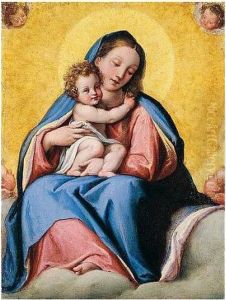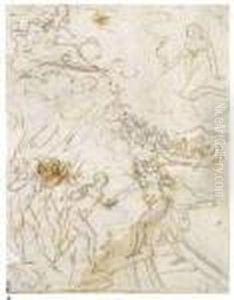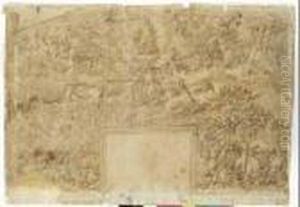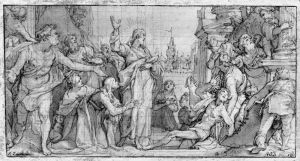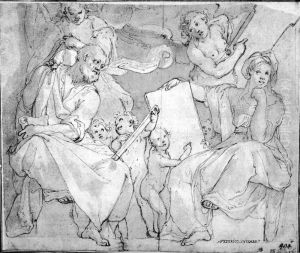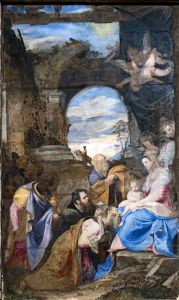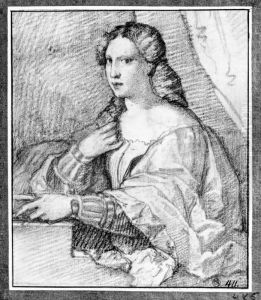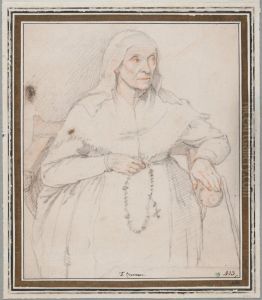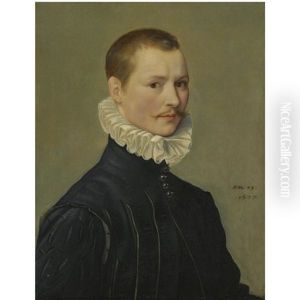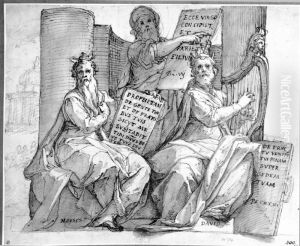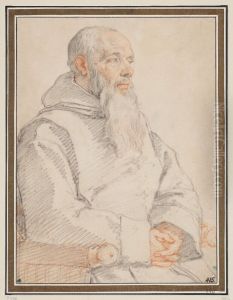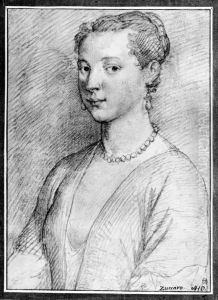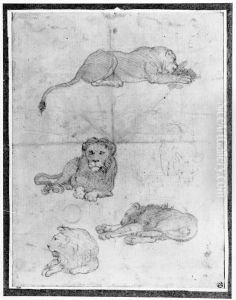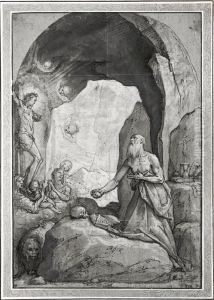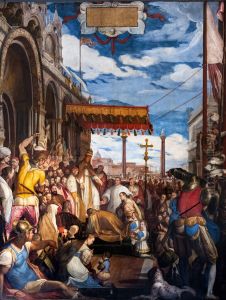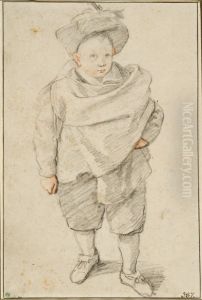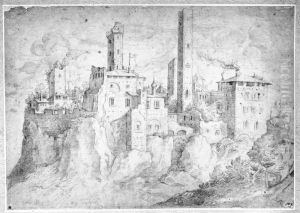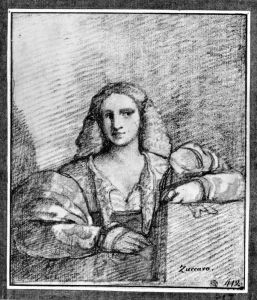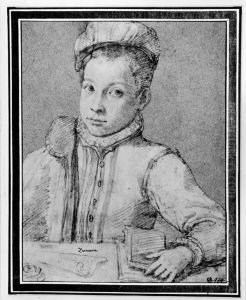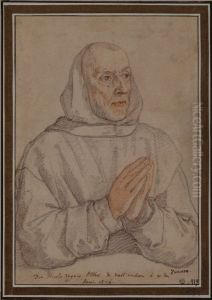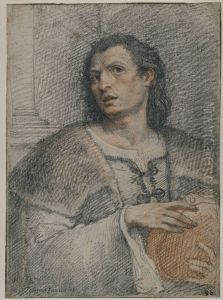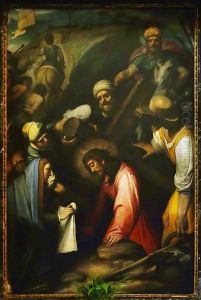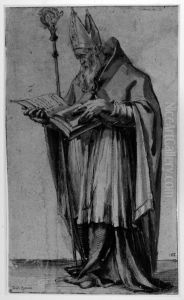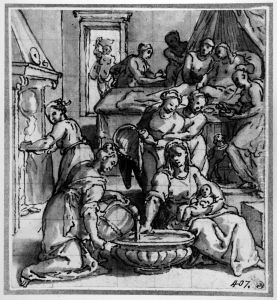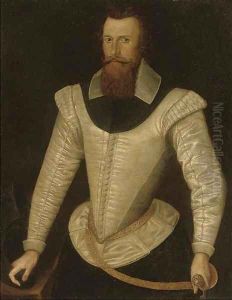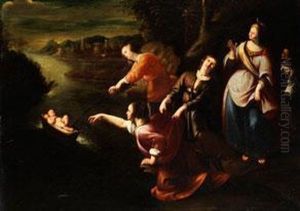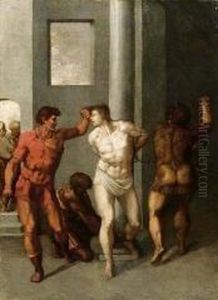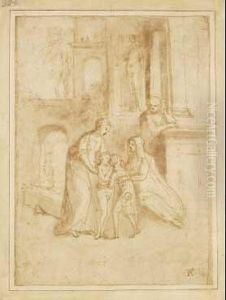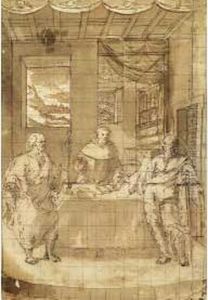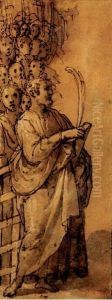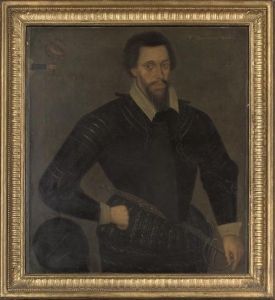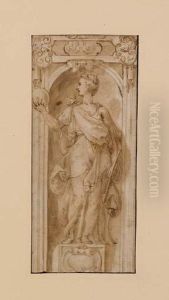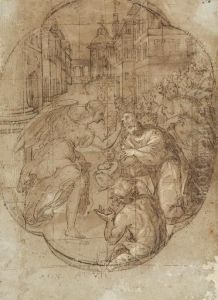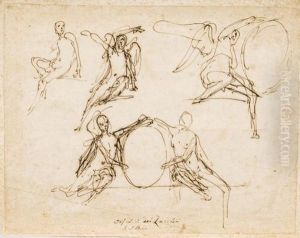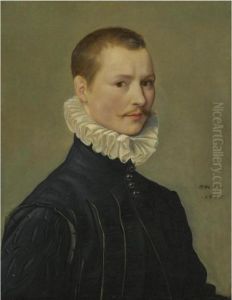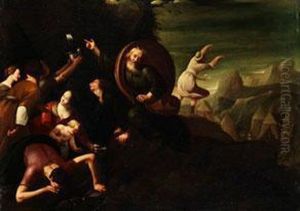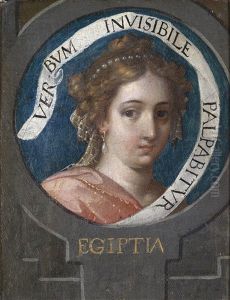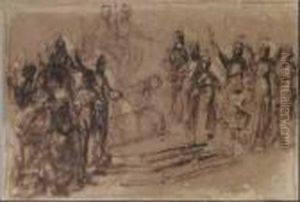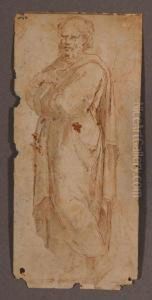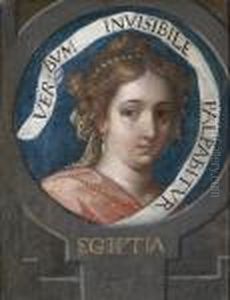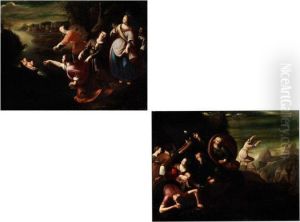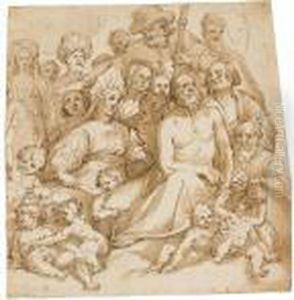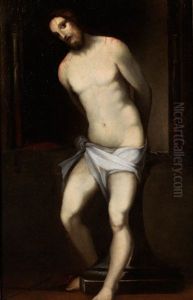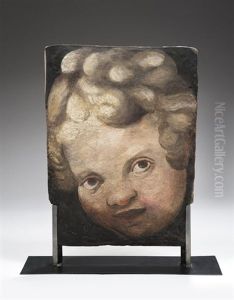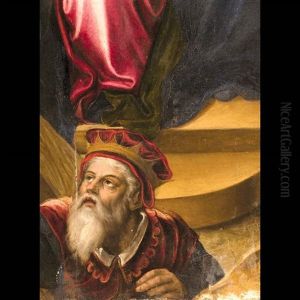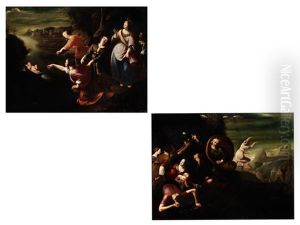Federico Zuccari Paintings
Federico Zuccari, also known as Federico Zuccaro or Zucchero, was an Italian Mannerist painter and architect, active during the late Renaissance period. Born in Sant'Angelo in Vado, Duchy of Urbino (now in the Marche region of Italy), around 1540 or 1541, Federico was the younger brother of Taddeo Zuccari, who was also a painter. Federico received his initial training from his older brother and worked with him in Rome on various projects.
After Taddeo's death in 1566, Federico took over the workshop and completed some of his brother's commissions. He soon established himself as a talented artist in his own right, known for his frescoes and altarpieces. His works are characterized by their grand scale, vivid colors, and dynamic compositions, typical of the Mannerist style that sought to go beyond the balanced and harmonious works of the High Renaissance.
Zuccari's travels took him to various parts of Italy, and he also spent time in Spain, where he worked for Philip II in the Escorial. In England, he painted the doomed Queen Elizabeth I, although this portrait no longer survives. One of his significant contributions to the world of art was his theoretical work. He wrote on the principles of painting, and his treatise on the art was influential in spreading the ideas of the Mannerist movement.
In Rome, Federico's most notable works include the completion of the frescoes in the dome of the Florence Cathedral begun by Giorgio Vasari and the decoration of the Apostolic Palace in the Vatican. His ambitious but ultimately unsuccessful project in the Lateran Palace led to his departure from Rome.
Federico Zuccari was not just an artist but also an organizer. He played a pivotal role in the foundation of the Accademia di San Luca in Rome, an institution that still serves as an association of artists in the city. His work was widely respected, and he had a significant impact on the development of 16th-century Italian art. Federico Zuccari died on 20 July 1609 in Ancona. His legacy is remembered for his contributions to painting, architecture, and art theory during the Mannerist period.
